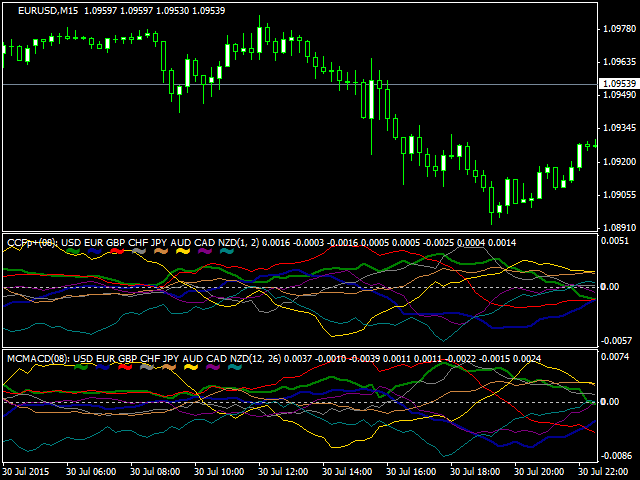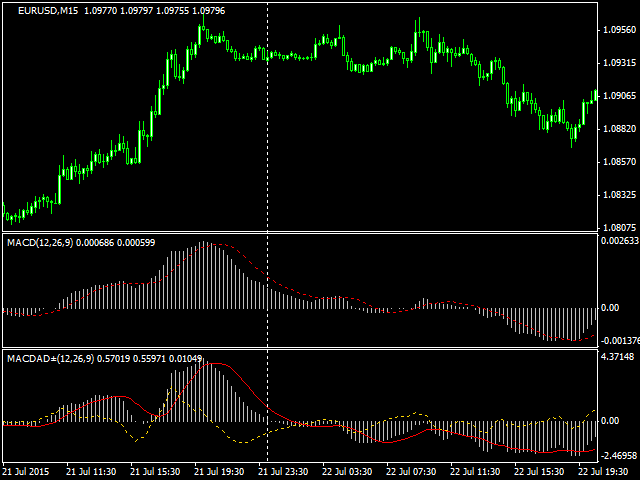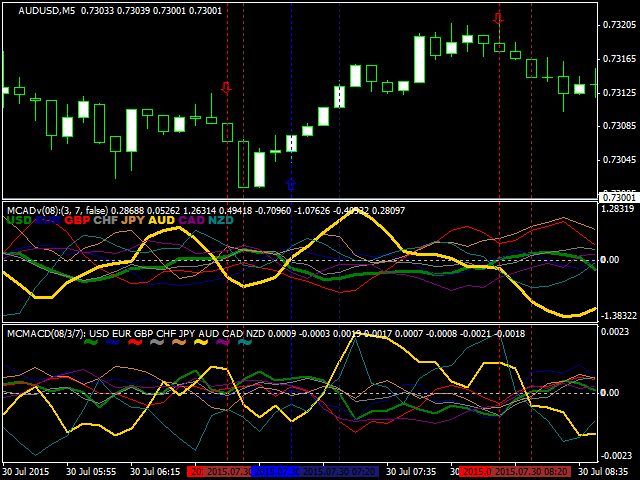MCAD: Multi-Currency Accumulation/Distribution for Forex and other markets
One of the first such indicators was so called cluster indicator CCFp. You may find more details and source codes in the article.
The idea of the indicator is to extract relative strength of currencies from a set of Forex pairs. As far as there is no universal and stable measure of cost (price of everything changes every moment, even for such fundamental "goods" as USD and gold), 2 moving averages are used for calculating changes of costs: a relation of fast MA to slow MA with predefined periods.
As you know 2 MAs are used in the same way in the conventional MACD indicator (Moving Average Convergence Divergence). The only difference with CCFp was that it replaced both of the plain old MAs with a superposition of many different moving averages in order to stabilize and straighten the curves of the indicator.
Indeed, if you compare CCFp with multi-currency MACD, you may notice great resemblance.

Here MCMACD (Multi-Currency MACD) is calculated on currencies' values extracted from quotes of several Forex pairs (as CCFp does), but using the same MACD formula as the conventional MACD does for a single pair.
And now we come finally to the main point of the post. All we have mentioned so far use prices. But what if you could take volumes into account?
There is a well-known Accumulation/Distribution indicator, which transforms price curve into combined price/volumes meter. It's widely recognized as a better, more adequate descriptor for quotes' movements.
It seems a good idea to calculate MACD on AD data instead of plain prices. For a single instrument this can be done by MACDAD indicator.

And for a group of related instruments such as Forex majors, a big picture can be obtained by MCAD indicator. MCAD stands for Multi-Currency Accumulation/Distribution, though it can work not only with currencies but with market indices, CFDs, spot and other tickers.

If you compare MCAD built from volume-aware AD to MCMACD built from pure price, you may see that MCAD gives more prompt signals. Red and blue lines in the screenshot denotes bars where MCAD suggests to sell and buy respectively. Dark-red and dark-blue lines denotes bars where MCMACD confirms the same actions. Please note the lag between MCAD and MCMACD. This is the advantage volumes can provide in trading.


